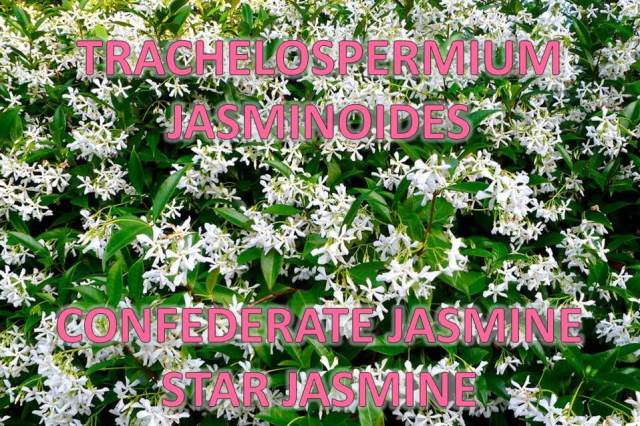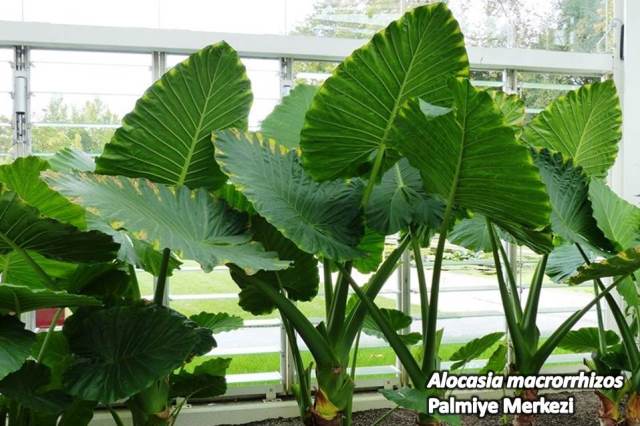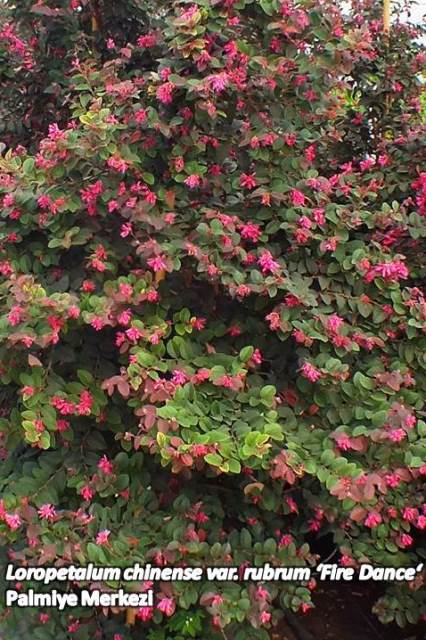 |
| |
|
|
|
If you wish this
program to be sent to your or your friends’ e-mail address,
please get a subscription (totally free of charge, and no
advertisements will be sent). I would like to get a subscription to “The Fourth Dimension in Landscape Design”>>>>>>> |
PEYZAJDA 4. BOYUT December 2017
PEYZAJDA 4. BOYUT November 2017
PEYZAJDA 4. BOYUT October 2017
PEYZAJDA 4. BOYUT September 2017
PEYZAJDA 4. BOYUT August 2017
PEYZAJDA 4. BOYUT July 2017
|
EUPHORBİA RİGİDA – MAVİ SÜTLEĞEN Euphorbia’lar (Sütleğengiller) bitkiler âleminin en kalabalık ailelerinden biri olan Euphorbiaceae ailesine aittir. Bu aile 300 cins ve 7500 türü içermektedir. Euphorbia cinsi 2000 dolayında tür içerir. Sütleğenler tek yıllık (annual), iki yıllık, (biannual) çok yıllık (perenial), otsu, çalı veya ağaç formunda, etli yapraklı, yaprak döken veya dökmeyen, dona dayanıklı veya tropikal olabilirler. Euphorbia’aların en ilgi çeken özelliklerinden biri, büyüklükleri, sıcaklık, su istekleri ve ömür süreleri birbirinden farklı olan çok sayıda bitkinin bu cins altında toplanmasıdır. Euphorbia rigida (Euphorbia biglandulosa); Euphorbiacea ailesine ait, her dem yeşil, çok yıllık bir sütleğendir. Bitki, dik olarak çıktıktan sonra çevreye yayılım gösterir. Mavi Sütleğen, ülkemizde doğal olarak, kırsal alan ve bahçelerde bulunan bir bitkidir. Anavatanı; Akdeniz havzasından Kafkaslara ve Ortadoğu’ya kadar uzanan bölgedir. Bitkinin; ince, uçları sivri, mavi-yeşil kalın yaprakları, bir gövde üzerinde, rozet dizilimi gösterirler. 70 cm’ye ulaşan gövdeler, merkezden çevreye yayılarak büyür ve bitki, 90 cm genişliğe erişebilir. Kış sonu veya ilkbaharda, gövde uçlarında, parlak sarı renkte çiçekler oluşur. Pembe renkteki goncalar açılınca, sarı çiçekler ortaya çıkar. Çiçek açtıktan sonra ana bitki ölür ve bitkinin ortasından yeni gövdeler sürerler. Euphorbia rigida, güneşli veya yarı gölge alanları sever. Kuraklığa dayanıklı olmakla birlikte, çok sıcak havalarda sulanmaya gereksinim gösterebilir. İyi drenajlı yerlerde, toprak için seçici değildir. Bitki, besin bakından yoksun topraklarda daha fazla çiçek açar. Uygun ortamda büyümesi hızlıdır. Mavi Sütleğen, dona çok dayanıklıdır. -15 °C dayandığı bilinmektedir. Üretimi; köklerinin ayrılması, gövdeden yapılan çelikler veya tohumladır. Euphorbia rigida’nın tüm kısımları, yenildiğinde ciddi rahatsızlık yaratır, sütlü öz suyu deride alerjik reaksiyonlara neden olabilir. Kültür yapıldığı durumlarda, eski kurumuş gövdeler ve çiçekler budanmalıdır. Peyzajda Kullanımı: Mavi Sütleğen, kurakçıl peyzaj için seçilecek türlerdendir. Kaya bahçeleri için uygundur. Kış sonu ve erken baharda çiçek açtığı için peyzaja renk katar. Çok yıllık bahçelerde, kısa boylu bitkilerin arkalarında kullanılır. Saksılarda, vurgu bitkisi olarak ve çöl bitkileriyle kombine edilebilir.
|
PEYZAJDA 4. BOYUT June 2017
PEYZAJDA 4. BOYUT May 2017
LAURUS NOBILIS - BAY LAUREL
Laurus nobilis is belonging to Lauraceaea family. The genus Laurus includes four accepted species. Bay Laurel is an aromatic evergreen small tree or large shrub. It may reach up to 15 meters high. It is native to the Mediterranean region.
60 million years ago southern Europe and northern Africa were covered by laurel forests. Today, Laurus nobilis is the one left and natural distribution of it, is confined to pockets of Morocco, Macaronesia, Southern Black Sea and Mediterranean Basin. Bay Laurel has been cultivated for millenarian as an ornamental and for its aromatic leaves and classical symbolism. Linnaeus named the species nobilis (noble).
The Laurus nobilis is dioecious (unisexual), with male and female flowers on separate plants. Each flower is pale yellow-green, about 1 cm diameter, and they are borne in pairs beside a leaf. It flowers from April to May.The leaves are glabrous, 6–12 cm long and 2–4 cm broad, with an entire margin. On some leaves the margin undulates. Stone fruit is a small, oval in shape about 1 cm long that contains one seed.
Bay Laurel is hardy to -12˚C. It is suitable for; sandy, loamy or clay soils. Tolerates acid and alkaline soils but prefers well-drained soil. It can grow in semi-shade or in full sun. The plant can tolerate strong winds but not maritime exposure. There is a gold form that called Laurus nobilis ‘Aurea’.
Use in Landscape: Laurus nobilis is widely cultivated as an ornamental plant in regions with Mediterranean or oceanic climates, and as a house plant or greenhouse plant in colder regions. It is used in topiary to create single erect stems with ball-shaped, box-shaped or twisted crowns; also for low hedges.
Bay Laurel was used to fashion the laurel wreath of ancient Greece, a symbol of highest status. The symbolism carried over to Roman culture, which held the laurel as a symbol of victory. Ovid tells the story in the metamorphoses that laurel tree was first formed when the nymph Daphne was changed into a Laurel tree because of Apollo's pursuit of her. Daphne is the Greek name for the tree.
Laurel essential oil contains many components (eucalyptol, lauric acid etc). Aqueous extracts of Laurus nobilis can also be used as astringents and even as a reasonable salve for open wounds. In massage therapy, the essential oil of Bay Laurel is reputed to alleviate arthritis and rheumatism. An oil from the fruit is used in soap making.
The plant is the source of several popular herbs and one spice used in a wide variety of recipes, particularly among Mediterranean cuisines. Most commonly, the aromatic leaves are added whole to Italian pasta sauces. Whole bay leaves have a long shelf life of about one year, under normal temperature and humidity.
PEYZAJDA 4. BOYUT April 2017

|
COLOCASIA ESCULENTA ‘BLACK MAGIC’ – ELEPHANT EAR ‘BLACK MAGIC’ Colocasia is a genus of flowering plants in the family Araceae. It is native to southeastern Asia and the India. In English it is called Elephant Ear or Taro. The generic name is derived from the Greek word kolokasion, which was used for the edible roots of both Colocasia esculenta and Nelumbo nucifera. Esculenta, means "edible" in Latin. The edible roots of Colocasia esculenta have been cultivated in Asia for more than ten thousand years. In Turkiye, Colocasia esculenta is locally known as "Gölevez" and mainly grown on the Mediterranean coasts of Alanya. Colocasias are herbaceous, perennial plants with a large corm on or just below the ground surface. Large leaves are up to 150 cm long. The Elephant Ear plant gets its name from the leaves, which are shaped like a huge ear. The plant reproduces mostly by means of rhizomes. Dividing should bi done in winter or early spring. It also produces "clusters of two to five fragrant inflorescenes in the leaf axils". Colocasia esculenta is a tropical plant grown primarily for its edible corms, the root vegetables most commonly known as taro. Taro's primary use is the consumption of its edible corm and leaves. Like other members of the family, leaves and rhizomes contain of calcium oxalate monohydrate crystals along with other irritants. If the stem is digested row, can numb and swell the tongue and pharynx resulting in difficult breathing, and sharp throat pain. Prolonged boiling before serving or processing may reduce these risks. Colocasia esculenta ‘Black Magic’ is a variety, which has dark purple, almost black, heart-shaped leaves. Loves wet conditions. It is also sold as an ornamental aquatic plant. Elephant Ear ‘Black Magic’ is not very frost hardy, can withstand mild frost. Anywhere colder than Mediaterean coast should be treated like summer blooming bulbs. After frost kills the top growth, bulbs should be dig up and dried in open shade. Hang them in well-ventilated sacks in a dry, cool place. When spring arrives, plant the bulbs in 3-10 lt pots and put them in a greenhouse to give them an early start. Grow in a warm greenhouse or outdoors at a pool margin, in a moist border, or in large aquatic containers. Colocasia esculenta ‘Black Magic’ generally do best and reach their most attractive proportions in full sun, but can tolerate partial to full shade outdoors and still thrive. Indeed, locating specimens in shade is preferable in regions that experience lots of heat and low humidity during the growing season. Use in Landscape: The enormous elongated heart-shaped leaves of Elephant's Ears make them useful accents in beddings, large containers and water gardens. Seldom seen flowers resemble trumpet-like Callas. Best in climates with hot and humid summers. Heat and water loving, it can be grown outdoors year round in frost-free climates. Elsewhere, lift and store tubers in the fall.
|
PEYZAJDA 4. BOYUT March 2017
|
ALOCASIA MACRORRHIZOS - GIANT TARO - ELEPHANT EAR Alocasia is a genus of broad-leaved, rhizomatous or tuberous flowering perennials from the Araceae (arum) family. There are about 80 species native to tropical and subtropical Asia to Eastern Australia. Acacia macrorrhizos is a species of Alocasia genus. It is native to tropical forests in Sri Lanka, India, Malaysia and Queensland where it grows in the forest understory in openings and along streams. Common names include Giant Taro and Elephants Ear. Domesticated Elephant Ear originated from the Philippines. Alocasia macrorrhizos is a massive perennial with large cordate or sagittate leaves up to 160 cm in length and 100 cm wide. The leaves are glossy green with paler veins. Leaf stalks (petioles) are 60-120 cm long. On the underside the veins are prominent and raised. This foliage creates a very exotic and tropical atmosphere and as the plant matures it forms a thick brownish trunk. The stem will reach for up to 200 cm. The araceous flowers of Elephant Ear grow at the end of a short stalk, but are not noticeable; often hidden behind the leaf petioles. The flowers are white to crème. Mature plants start to produce offsets which can be easily transplanted. The rhizomes may get 20 centimetres in diameter. Plants can be reproduced by seeds, offsets, cuttings of the rhizomes and stems. The stem is edible, but contains of calcium oxalate crystals along with other irritants that can numb and swell the tongue and pharynx resulting in difficult breathing, and sharp throat pain. Prolonged boiling before serving or processing may reduce these risks. There are some variegated elephant ears called Alocasia macrorrhizo 'variegata'. When fully grown, this beautiful elephant ears has gorgeous glossy leaves up to 1 metre long, each of which are beautifully marbled with tones of green, cream and white. Elephant Ear requires continual warmth and humidity. The soil should be rich but well drained, and the plant appreciates frequent watering, and can tolerate shallow flooding. However, when the plant is young and small, too much water, particularly if the weather is cold, will rot the tuber. Partial shade is ideal, and Alocasia macrorrhizo can tolerate almost full shade. It likes lots of fertilizer. This is not a salt tolerant plant. This tropical perennial is a little more cold hardy than many of its relatives. Freezing temperatures damage the leaves but the trunk sprouts new ones if it hasn't fallen below about -4 ºC. Use in Landscape: Elephant Ear is distinctly exotic and tropical plant that they are increasingly becoming popular as house and greenhouse plants. If you need a bold and imposing foliage plant for a tropical or subtropical shady background, Alocasia macrorrhizo is the one to be chosen. It is often grown in wet situations. It can be used in landscapes at Mediterranean countries. Elephant Ear is cultivated throughout the tropics for its edible rhizomes and shoots. |
PEYZAJDA 4. BOYUT February 2017

|
TRACHELOSPERMUM JASMINOIDES - CONFEDERATE JASMINE, STAR JASMINE Trachelospermum jasminoides is a species belong to Apocynaceae family. Its binominal name is Rhynchospermum jasminoides. The name for the genus comes from the Greek word trachelos meaning "neck" and sperma meaning "seed" for the shape of the seeds and the specific epithet means "Jasmine like". English name Confederate Jasmine comes from former Confederate States of America where it is widely planted (California and particularly in the Southeastern United States). Trachelospermum jasminoides is native to Japan, Korea, Southern China and Vietnam. It is a twining, evergreen, woody perennial. Growing to 4-5 m high. Dark green and shiny leaves are opposite, oval to lanceolate, 3–10 cm long and 1–5 cm wide. The fragrant flowers are white, 1–2 cm diameter, with a tube like corolla opening out into five petal like lobes. The fruit is a slender follicle 10–25 cm long and 3–10 mm broad, containing numerous seeds. The plant with its scented jasmine-like flowers, it is often known as Star Jasmine. In late spring the new flush of growth is a bright green. Strongly perfumed star shaped white flowers hanging in clusters on outside branches appear by the summer. The individual flowers open over a long period. Confederate Jasmine likes well drained conditions and full sun to partial shade for the most blooms. It prefers neutral to alkaline soil conditions, but will grow in slightly acid soils. Trachelospermum jasminoides is a vine that does need support. Since it blooms on the previous year's growth, pruning should be done after flowering. Beyond initial planting and training, plant requires little formative pruning and training, as it is a self-clinging, twining climber and will cover the space effectively on its own. Renovation, if necessary, consists of cutting all shoots back by two thirds, to a side shoot or flowering spur. This should encourage new shoots to break from the remaining branches and from the base. Confederate Jasmine is usually trouble free. When grown under glass, it may be susceptible to common glasshouse pests such as red spider mite, whitefly, scale insect and mealy bug. In heavy, damp or clay soils, or in soils with a fluctuating water table, plant may be susceptible to phytophthora root rots. Trachelospermum jasminoides can withstand -12 ˚C. Leaves have a tendency to turn bronzy in the winter with temperatures below freezing. Propagation is commonly done with cuttings. Nowadays, there are some cultivars with variegated leaves or flowers with different colors like yellow or pink. All parts of plant are poisonous if ingested. Handling plant may cause skin irritation or allergic reaction. Valuable perfume oil is extracted from the flowers and used in perfumery industry. Use in Landscape: Confederate Jasmine is commonly grown as ornamental plant and houseplant. In gardens, public landscapes, and parks it is used as a climbing vine, a groundcover, and a fragrant potted plant on terraces and patios. As a drought tolerant plant, it is suitable for xeriscaping. |
PEYZAJDA 4. BOYUT January 2017
|
LOROPETALUM CHINENSE var. rubrum – CHINESE FRINGE FLOWER Loropetalum is a genus belongs to Hamamelidaceae (Witchhazel) family. The genus name, Loropetalum, is derived from the Greek words loron for strap and petalon for petal, and refers to the long, thin petals of plants fringe-like blooms. It is native to China, Japan and the Himalayas. Loropetalum chinense has white flowers with green leaves, the other pink flowering variety called Loropetalum chinense var. rubrum. This variety has crimson red flowers with leaves varying from bronze-red when new to green or burgundy when mature depending on selection and growing conditions. Loropetalum chinense var. rubrum introduced into the trade in the 1980's, it has become popular shrub for Southern Europe and USA. Chinese Fringe Flower is evergreen broadleaf shrub or small tree. Depending on variety, shrubs can grow up to 3-5 m tall. New compact cultivars are only 60-90 cm tall. Leaves are 2-5 cm long and 2-3 cm wide, placed alternately along the stem. Branches held outward in horizontal layers display the flowers and colourful foliage. Flowers have four strap like petals less than 2 cm long, but they make groups of three to six in the leaf axils. Loropetalum chinense prefers moist, slightly acidic, well-drained soil. They do well in full sun to light or partial shade. It is hardy down to -15˚C. Normally, they have few serious pest or disease problems. Root rot may occur, especially in poorly drained clay soils. In addition, leaves may become chlorotic (yellow) in alkaline soil. Mites may cause foliage to yellow. Chinese Fringe Flower takes well to pruning and can be maintained as a hedge at almost any height. But it has lost natural arching shape after pruning. So it is best to plant Loropetalum chinense in a place where no pruning is necessary. If pruning is needed, this to done in spring after the flowers fade. It makes a beautiful specimen plant and can even be pruned into a small, multi-trunked tree by removing the lower branches. There are many cultivars of Loropetalum chinense, some of them: Loropetalum chinense var. rubrum 'Burgundy'; The new foliage on this shrub emerges reddish-purple, and then it matures to purple-green. In autumn, the foliage will again change colors to a brilliant red. The pink flowers bloom intermittently throughout the year. This cultivar grows to about 3-5 m tall and as wide. Loropetalum chinense var. rubrum ‘Blush' or ‘Daybreak's Flame’; light pink-tinged leaves with paler rose-coloured flowers. Loropetalum chinense var. rubrum ‘Ruby’; new growth shiny, ruby-red; compact form. Loropetalum chinense var. rubrum ‘Bicolour'; vigorous cultivar with deep maroon leaves turning to dark green as the season progresses; white flowers with light pink streaks. Loropetalum chinense var. rubrum ‘Fire Dance'; new growth is reddish purple changing to green as season progresses. Flowers are hot pink, 1-2 m tall. Loropetalum chinense var. rubrum ‘Suzanne’; Reddish purple new growth, leaves are more rounded than species. Compact habit, 1,5 m tall, medium-pink flowers. Loropetalum chinense var. rubrum ‘Zhuzhou Fuscia'; Blackish maroon leaf colour that persists into summer. Deep pink flowers, up to 3 m tall. Loropetalum chinense var. rubrum ‘Pipa's Red'; Very dark purple foliage; bright pink flowers. Compact, up to 1,5 m tall. Landscape Use: Chinese Fringe Flowers show excellent versatility in the landscape. In full bloom, many cultivars of the pink-flowering variety are showy eye-catchers. The white-flowers of the species tend to be less visible against the leaves from a distance, but are very attractive when viewed up close. They are attractive when grown in clusters or mixed screens as well as foundation plantings, single specimens and bonsai. They make attractive hedges, but lose their naturally graceful form if heavily pruned. When limbed up, they form lovely, small trees. Loropetalum chinense and cultivars can be an effective groundcover, but may require periodic removal of vertical stems. Low-growing varieties are being selected for this purpose. Taller forms may be utilized as screens. Individually, the purple-leafed forms provide a good contrast to both green and golden foliage plants and are a superior replacement to thorny, red berberry shrubs.
|





